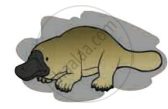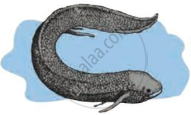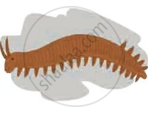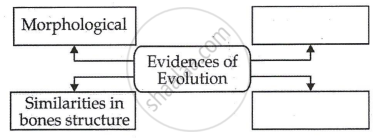Advertisements
Advertisements
प्रश्न
The decaying process of C-14 occurs continuously in dead organisms only.
पर्याय
True
False
उत्तर
True
APPEARS IN
संबंधित प्रश्न
Differentiate between homology and analogy. Give one example of each.
(a) Select the homologous structures from the combinations given below:
(i) Forelimbs of whales and bats
(ii) Tuber of potato and sweet potato
(iii) Eyes of octopus and mammals
(iv) Thorns of Bougainvillea and tendrils of Cucurbita
(b) State the kind of evolution they represent.
Explain with an example for the given, how the following provides evidence in favor of evolution in organisms :
Homologous organs
Which of the following pairs of two vegetables represent the correct homologous structures?
(A) Sweet potato and potato
(B) Sweet potato and tomato
(C) Carrot and potato
(D) Radish and carrot
With the help of any two suitable examples explain the effect of anthropogenic actions on organic evolution.
Write the similarity between the wing of a butterfly and the wing of a bat. What do you infer from the above with reference to evolution?
How analogy and homology considered as an evidence in support of evolution ?
Four students P, Q, R and S differently reported the following set of organs to be analogous :
P. Forelimb of a frog and forelimb of a lizard
Q. Forelimb of a bird and forelimb of a human
R. Wings of a parrot and wings of a butterfly
S. Wings of a bird and wings of a bat
The two students who have reported correctly are :
(A) P and Q
(B) Q and R
(C) R and S
(D) P and S
Find out from newspapers and popular science articles any new fossil discoveries or controversies about evolution.
Enlist any four sequential evolutionary names of human ancestors.
Explain with an example for the given, how the following provides evidence in favor of evolution in organisms :
Analogous organs
Name the scientists who Discovered the fossil of Australopithecus
How do homologous organs help in providing evidence for organic evolution?
Human tailbone is a vestigial organ. Explain.
Name two animals having homologous organs and two having analogous organs. Name these organs.
X, Y, and Z are three animals. The animal X can fly but animal Y can only run on ground or walls. The forelimbs of animals X and Y have the same basic design but they are used for different purposes such as flying and running respectively. The animal Z became extinct an long time ago. The study of fossils of Z tells us that it had some features like those of X and some like those of Y. In fact, Z is said to form a connecting link in the evolutionary chain of X and Y.
(a) What could the animals X, Y and Z be?
(b) What name is given to the forelimbs like those of X and Y which have the same basic design but different functions?
(c) Name one feature in which Z resembled X.
(d) Name one feature in which Z resembled Y.
(e) Which is the correct evolutionary chain involving X, Y and Z : X → Z → Y or Y → Z → X?
Vestigial organ ______ present in human body is proof of evolution.
Write short notes based upon the information known to you.
Connecting link
Write the names of those animals in whom the human body organs are functioning.
“Appearance of melanised moths post-industrialisation in England is a classic example of evolution by natural selection.” Explain.
With the help of diagrams, describe emasculation and bagging.
Define fossil.
Short answer question.
Give the significance of fossils.
Long answer question.
Would you consider wings of butterfly and bat as homologous or analogous and why?
Give scientific reason.
Duck-billed platypus shows relationship with mammals.
Which evidence of evolution is shown in the given picture? Explain the importance of this evidence.

Explain any five types of evidence that support the theory of evolution.
Write the answers to the questions by observing the figure below.
 |
 |
 |
| (a) | (b) | (c) |
- Write the name of the animal ‘(a)’ in the figure.
- Write the name of the animal ‘(b)’ in the figure.
- Write the name of the animal ‘(c)’ in the figure.
- Which evolutionary evidence is illustrated by this figure?
- Write the definition of that evidence for evolution.
A human hand, a front leg of a cat, a front flipper of a whale and a bat’s wing look dissimilar and adapted for different functions. What is the name given to these organs?
The fossil remains of Archaeopteryx is a connecting link between ______
Homologous organs are:
Study of fossils is ______.
While creation and presence of variation is directionless, natural selection is directional as it is in the context of adaptation. Comment.
You have studied the story of Pepper moths in England. Had the industries been removed, what impact could it have on the moth population? Discuss.
Write avian characters of Archaeopteryx.
Industrial melanism in England after 1850 is an excellent example of Natural selection. Explain how?
Complete the following conceptual picture:

